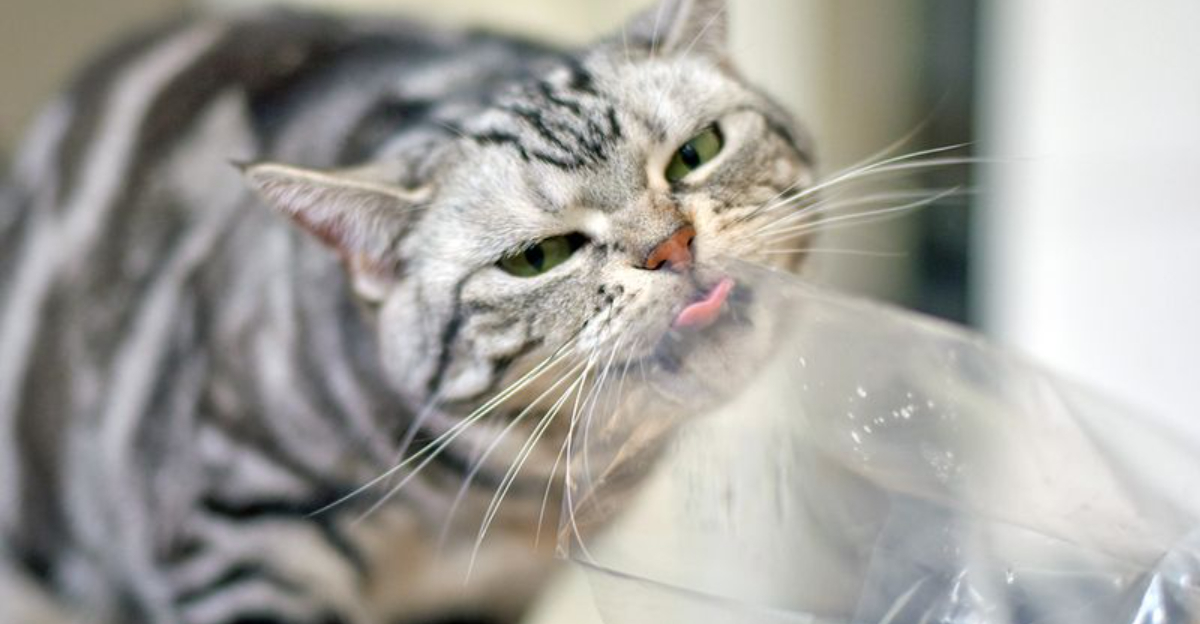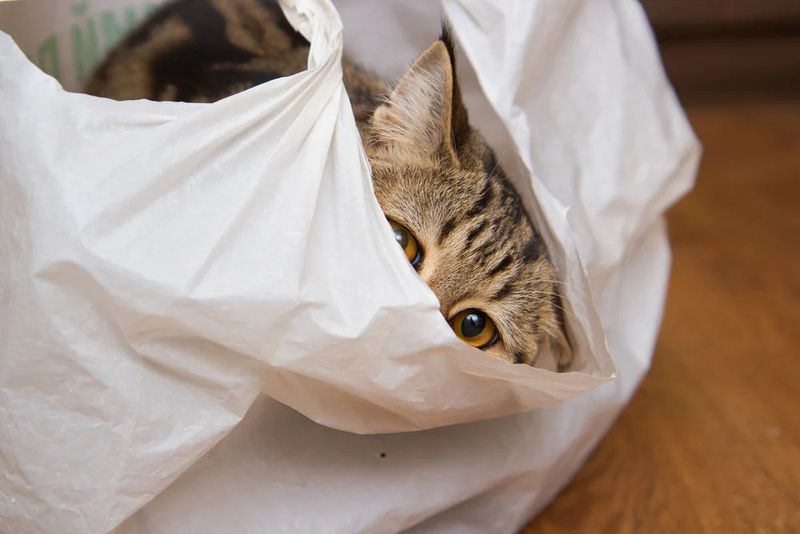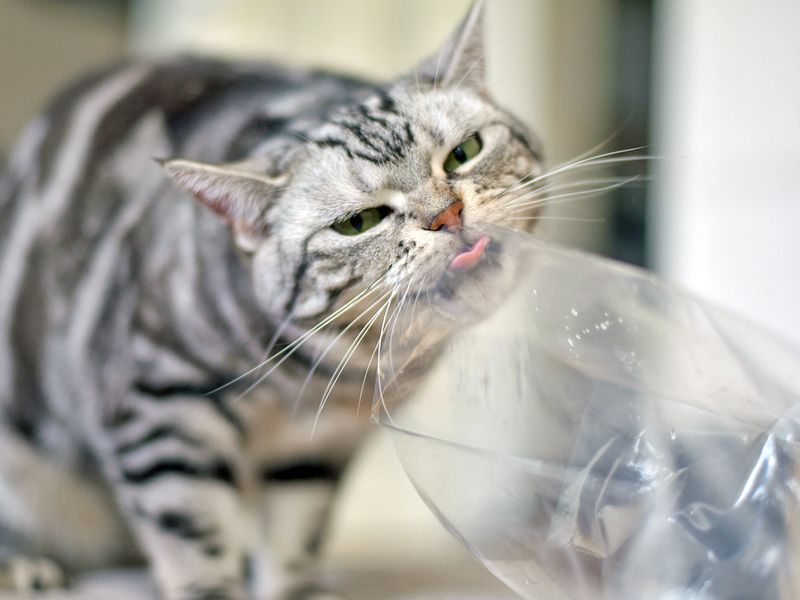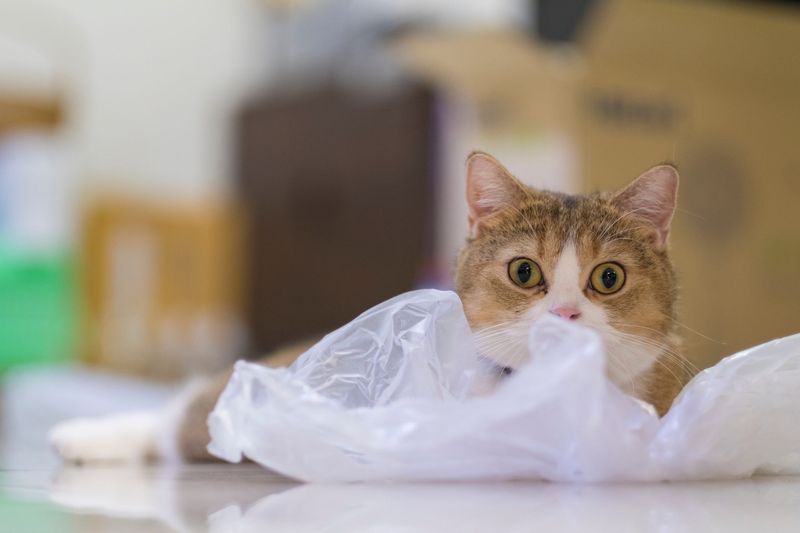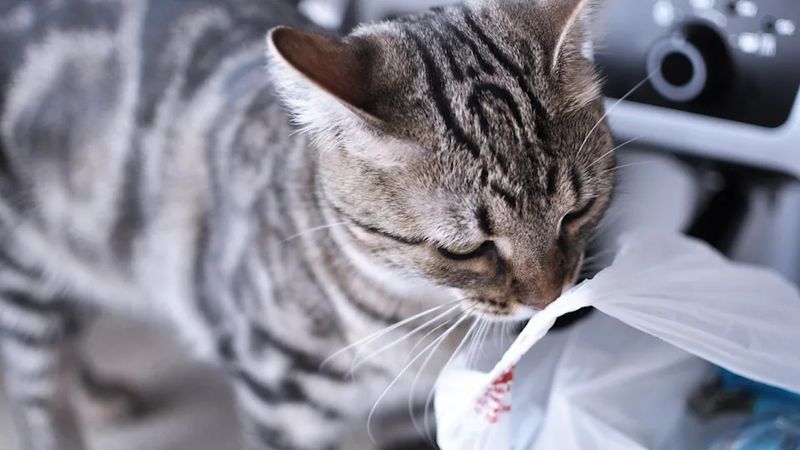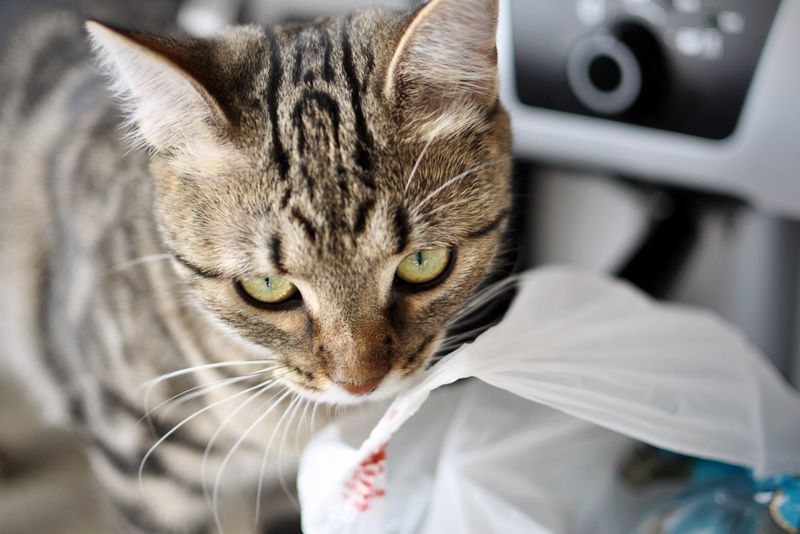📖 Table of Content:
Cats licking plastic bags is a curious behavior that captures the attention of many pet owners. Understanding the reasons behind this peculiar habit can help in effectively managing it and ensuring the safety and well-being of your feline friends. From sensory attractions to possible medical concerns, here are some compelling reasons why cats might be drawn to the allure of plastic.
1. Sensory Attraction
Imagine a cat’s delight when encountering a crinkly plastic bag. The sound and texture mimic the rustling of prey, sparking their hunting instincts. This sensory appeal is further enhanced by the smoothness and coolness of the plastic surface, making it irresistible to their curious tongues. The sensory experience is akin to a tactile exploration, engaging their innate curiosity. Just as children are drawn to bubble wrap, cats find joy in the simple pleasure of a plastic bag, a harmless enchantment unless ingestion occurs.
2. Residual Food Odors
Plastic bags that once held groceries, especially meat or fish, retain lingering food scents that attract cats. With their heightened sense of smell, a cat can detect these enticing aromas, prompting them to lick or even chew the bags. This behavior transforms an ordinary bag into a treasure trove of olfactory wonders, akin to a gourmet experience for their sensitive noses. It’s a testament to their incredible sniffing capabilities that can turn the mundane into an aromatic adventure.
3. Chemical Additives in Plastic
Did you know some plastic bags contain chemicals like stearates, derived from animal fats? These additives can give the bags flavors and aromas that intrigue cats. The presence of biodegradable materials like cornstarch further entices them. This attraction isn’t solely about playful curiosity; it’s an exploration driven by scents and tastes that pique their interest. Such chemical lures can transform an ordinary household item into a captivating object for a cat, adding an unexpected layer to their sensory world.
4. Boredom or Stress
A lonely cat might turn to plastic bags in search of entertainment or stress relief. This behavior is not just a playful antic but can also indicate underlying anxiety or boredom. When mental and physical stimulation is lacking, the crinkly texture and engaging sound of the bag provide a temporary escape. This can sometimes lead to compulsive actions, known as pica, where cats chew or lick non-food items to cope. Ensuring ample playtime and environmental enrichment can help alleviate such tendencies.
5. Medical Concerns
Sometimes, a cat’s interest in plastic bags could signal health concerns. Dental issues or nutritional deficiencies might manifest in unusual chewing habits. Persistent licking or chewing should prompt a consultation with a veterinarian to rule out medical problems. The plastic bag becomes more than just a plaything; it might be an indicator of an underlying issue that needs attention. Understanding these signs ensures the well-being of your cat, turning a simple behavioral quirk into a crucial health consideration.
